By: Keith Lockwood
As I was coming across the Bay Bridge yesterday evening, I could not help but marvel at the schools of juvenile menhaden plying along the calm surface of the bay and drifting along in the currents on both sides of the bay. The bay is truly a bountiful basin of life and on this evening there did not seem to be any hungry striped bass or bluefish nearby. All was calm on the Chesapeake this evening, at least at this area.
The Conowingo Dam has been releasing a lot of water at mid-day intervals for power generation and there is a lot of discolored water moving down the lower Susquehanna and into the uppermost parts of the bay. It is beginning to clear some in the last six days and hopefully fishing will improve. In this satellite image from August 4, 2017, one can see the stained water coming out of the lower Susquehanna River.
Fishing for striped bass in the upper bay region continues to be one of the best places in the Maryland portion of the bay to consistently find striped bass exceeding 20” in length. The action for those chumming has been the best at Swan and Love Points with the action slacking off this week at Podickory Point. Sub-legal striped bass that are less than 20” are still dominating the chum slicks and also surface breaking fish events. Breaking fish in the areas around Love and Swan Points has been recently offering a fun way to catch some nice fish by jigging underneath the smaller surface striped bass. Breaking fish are being spotted mostly in the early morning and evening hours as striped bass chase juvenile menhaden along channel edges and most of the action lately tends to be on the eastern side of the bay.
Small bluefish have moved into the region and have been nipping at cut baits being drifted back in chum slicks and making short work of live spot being live lined in the region. The good news in regard to live lining spot is that spot can now be found in some of the region’s tidal rivers such as the Magothy and Chester Rivers.
Fishing for white perch remains good this week in the tidal rivers and hard bottom shoal areas in the bay. If you can find wild caught shrimp at the grocery store they make good bait when bottom fishing for white perch as well as peeler crab and the more expensive bloodworms. Fishing close to shore around structure is a fun way to catch white perch with light tackle. Small jigs with soft plastic bodies are an excellent way to fish and tend to not hurt your pocketbook too much when you get hung up. If you can catch your own with a fine mesh net, grass shrimp tend to be the ultimate bait when used on a simple one hook bottom rig or on a small jig fished tight to old dock piers and similar structure.
The Bay Bridge piers will always be an attraction to striped bass and white perch and it is pretty hard to pass up if you’re in the vicinity. Jigging with soft plastics near pier bases and rock piles is usually worth the effort or at least a peaceful diversion from motoring around the bay. Now that spot are available, sending a weighted live spot near some of the pier bases can work well. Some prefer chunking up current of the bases and many have their favorite piers to target.
Water temperatures in the middle bay region are holding about 78 degrees this week which is better than the higher temperatures we experienced two weeks ago. A few degrees can make a big difference in regard to comfort levels for the larger striped bass. Although the striped bass action is not location focused as the upper bay region is, there are legal-sized striped bass holding along channel edges throughout the region. Now that spot are readily available many are experiencing good results with live lining along the western and eastern edges of the shipping channel. Some of the best reports have been coming from the outside edge of Hackett’s Bar, the Gum Thickets, Thomas Point, Buoy 83, the Diamonds, False Channel and Chesapeake Beach. Bluefish are present and not always welcomed when live lining but there are also legal-sized puppy drum which are a very welcomed addition to anyone’s day. The red drum action tends to be mostly near the mouth of the Choptank and Little Choptalk.
Breaking fish composed of small striped bass and bluefish are being encountered now and then throughout the middle bay region, usually along shipping channel edges. The prey are bay anchovies and juvenile menhaden. Seasoned anglers know that often larger striped bass can be found lurking under the surface melee so jigging with metal or soft plastics is a great option. Spanish mackerel may soon join in and when jigging there is the possibility of a speckled trout or puppy drum now and then.
Trolling can be a worthwhile option at times either along the edges of breaking fish or along channel edges in the bay or tidal rivers. Trolling Storm type swim shads, diving Rapala type lures or bucktails dressed with twistertails have been popular. Inline weights or planers can be used to get lures down to about 20’ to 30”.
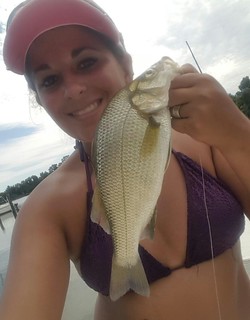
Angelina Watts was enjoying some light tackle white perch fishing when she caught this nice one. Photo by Ryan Jones
White perch fishing has been good in the tidal rivers and wonderful summer fun. Casting small jigs or spinners near shoreline structure in the evenings and mornings is a great way to end a day or start one. Fishing with small jigs or grass shrimp near or even under docks is a fun way to catch white perch and especially grand when kids are involved. White perch are also being caught out in the bay and the mouths of most tidal rivers on active oyster bottom. Spot and croakers can also round out the mix. The white perch will bite on shrimp, peeler crab and the spot prefer bloodworms. Some are reporting good luck on the spot with artificial Fishbites in bloodworm scent.
The lower bay region offers a wide variety of fishing opportunities this week. The newest fishery to develop is the solid arrival of Spanish mackerel. They are being caught in the deeper ship’s channel by trolling with small spoons behind planners and inline weights. Small Drone spoons, Clark spoons tend to be the most popular spoons to use and when these fish are targeted most up trolling speeds a notch. Spanish mackerel can also be caught while casting to breaking fish since they usually join in with bluefish and small striped bass when targeting bait.
Cobia fishing is reported to have improved over last week and some nice sized ones are being caught near the Target ship and Buoy 72A area. Most are chumming and drifting cut bait or live baits in their chum slicks. Bluefish are of course attracted by the chum slicks so they will be a major player. Others are looking for cobia holding near channel markers or in the shade of the Target Ship and casting live eels, live spot or skirted soft plastic jigs.
There has been some great fishing for striped bass in the over 20” category near the Route 301 Bridge and above on the Potomac River. Some are having good luck with chumming, others are jigging over suspended fish and trolling has been a good option also along channel edges. The Patuxent River is also holding striped bass but most report the throwback ratio of small fish is very high.
Fishing for croaker in the lower Potomac has been good from the mouth of the Wicomico River up to the Route 301 Bridge area. The croaker tend to be holding in about 25’ to 30’ of water and seafood store style wild shrimp have been a favorite bait. There are also spot in the same region but it will take bloodworm baits to catch them. White perch and blue catfish will also be a part of the bottom fishing mix. Fishing for spot in the lower Patuxent has been excellent in some of the deeper areas where good oyster bottom exists, croaker and white perch will also be part of the mix.
Bottom fishing for spot, croaker, small bluefish and white perch has been very good in the Tangier Sound area up to Hooper’s Island. The speckled trout fishing in the area has moved up a couple of notches this week, most likely due to cooler water temperatures. Casting soft plastic swimbaits and drifting peeler crab baits have been the most productive ways to fish for them.
Before we move into the crabbing, freshwater and ocean sections, here is an update and bay fishing conditions forecast from the team with Click Before You Cast.
Weekly Fishing Conditions Forecast Summary
(August 9, 2017 through August 16, 2017)
Maryland’s main bay surface and upper water column temperatures have dropped and are in the upper 70’s as a result of the recent rains and moderate air temperatures. There continues to be lots of Maryland waters with adequate oxygen from surface to bottom and the slight cooling of surface waters will provide more waters with a good combination of cool water and adequate oxygen.
Based on late July Department of Natural Resources water monitoring results, consider the Chesapeake Bay bridge area up to Rock Hall at depths down to about 30 feet. The cooling water temperatures should provide more areas with a good combination of cool water with adequate oxygen. Also consider Eastern Bay, Poplar Island and main bay areas outside of the mouth of the Choptank River.
For the full weekly fishing conditions summary and more detailed and up-to-date fishing conditions in your area of the bay, be sure to check out Eyes on the Bay’s Click Before You Cast. Since this is a new feature for Chesapeake Bay anglers, drop us a line with comments or suggestions.
Recreational crabbing has been good to excellent in the lower bay region’s tidal creeks and rivers this week, good in the middle bay region and fair in the upper bay. Crabbers will be seeing a lot of doublers this week as female sally crabs make their final shed to become sooks on the August full moon. Many crabbers are switching over to chicken necks from razor clams because of the large number of small crabs chewing up baits. Razor clams continue to be one of the most productive baits but get chewed up fairly quickly and of course are labor intensive and expensive. Good heavy male crabs are reported to be shallow this week, perhaps drawn to the shallows by shedding female sally crabs.
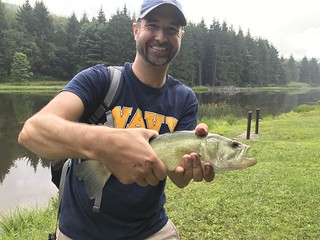
Stephen Schatz (Director of Communications at the Department of Natural Resources) was on vacation with his family and managed to find a little time to fish New Germany Lake and have some fun catching and releasing largemouth bass. Photo by Stephen Schatz
In the western regions of Maryland cooler air temperatures have caused water temperatures to take a dip and spurring many fish to become more active. The upper Potomac water temperatures have dropped to about 80 degrees and water clarity is improving as is the fishing for smallmouth bass. Small crankbaits are usually a good choice in discolored water and topwater lures or tubes as conditions improve. Deep shade as well as deep current breaks and ledges are good places to target.
Deep Creek Lake is providing good fishing for a mix of largemouth and smallmouth bass near deep shade such as grass and floating docks. Soft plastics, often whacky rigged is a good way to target them. Rainbow trout and walleye are holding in some of the deepest parts of the lake near the dam. The other lakes and ponds in the western region also contain largemouth bass and a variety of other fish species. They can provide some fun summertime fishing opportunities.
A recent drop in water temperatures has given largemouth bass a twitch to become a little more active and linger just a little longer in the shallows during the mornings and start their movements a little earlier in the evenings. Fishing for largemouth bass in the tidal Potomac has been very good this week and there are reports of good fishing with topwater lures over milfoil grass beds. Buzzbaits, frogs are two of the most popular lures being used at low tide and northern snakeheads will be ready and willing also. Out on the channel edges even some striped bass are showing up and will hit poppers or soft plastic swimbaits. Blue catfish are plentiful along channels and deeper areas of the river and can be caught on any kind of cut bait.
The tidal rivers of the middle and lower Eastern Shore hold many fishing opportunities this week with largemouth bass and northern snakeheads at the top of the list. Topwater lures on a falling tide over grass beds or spatterdock fields are a good tactic for both. Many ponds and lakes throughout all of the regions of Maryland offer good summertime fishing for largemouth bass, bluegills, chain pickerel, crappie and channel catfish.
It will be a very busy and crowded in Ocean City this week as the White Marlin Open has begun. The purse is an astounding 4.97 million dollars this year, it seems like complete insanity. Let us hope there is a lot less controversy over prize winnings this year. A small portion of the boats went out Monday due to rough conditions and yesterday participation was not much better. A few nice yellowfin tuna and a wahoo have been brought to the scales but so far no white marlin have met the minimum length and weight. There will be a lot of expectation this evening at the scales since most of the fleet cleared the inlet this morning.
Surfside fishing has been focused mostly on catching kingfish, croaker, spot and flounder in the surf on small cut baits or bloodworms. A few small to medium-sized bluefish are being caught on finger mullet in the surf. Medium-sized black drum are also being caught, mostly on sand fleas. A few anglers looking for some extra pull have been practicing catch and release fishing with inshore sharks.
At the inlet, Route 50 Bridge area, there are flounder and sheepshead to be caught. The sheepshead are holding tight to jetty rocks, bridge piers and bulkheads. They are being caught mostly on sand fleas. The back bay channels close to the inlet will be very busy will large boat traffic so it might be a good idea to head south to Sinepuxent Bay where things will be a little less hectic.
Out at the inshore wreck and reef sites there is a fairly good pick of sea bass and some nice flounder being caught. If one goes out even farther to the inside ledges near the canyons the sea bass fishing is much better and limit catches are common. Blueline tilefish can also be part of the mix as well.
At last report the yellowfin chunking that was going on at the 20 fathom lumps along the 30 Fathom Line and the inside of Massey’s Canyon has been lack luster lately. Most of the boats in the White Marlin Open will be trolling around the canyons this week and should provide good information.
Boom...Morgan
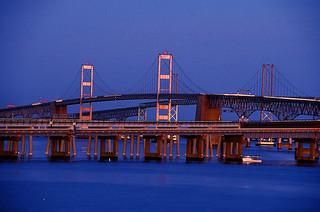
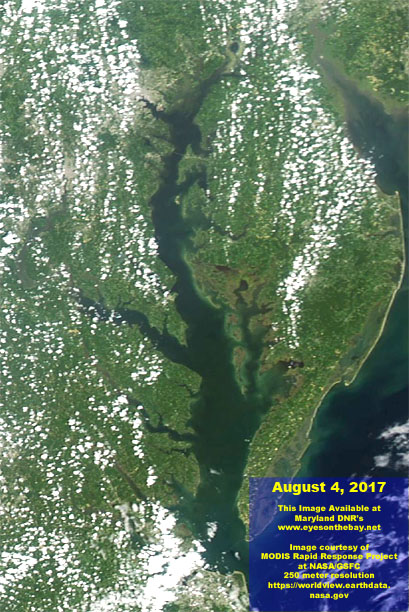
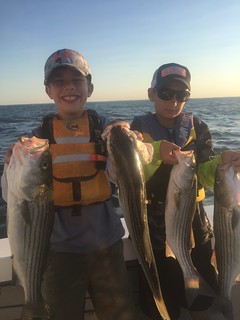
No comments:
Post a Comment